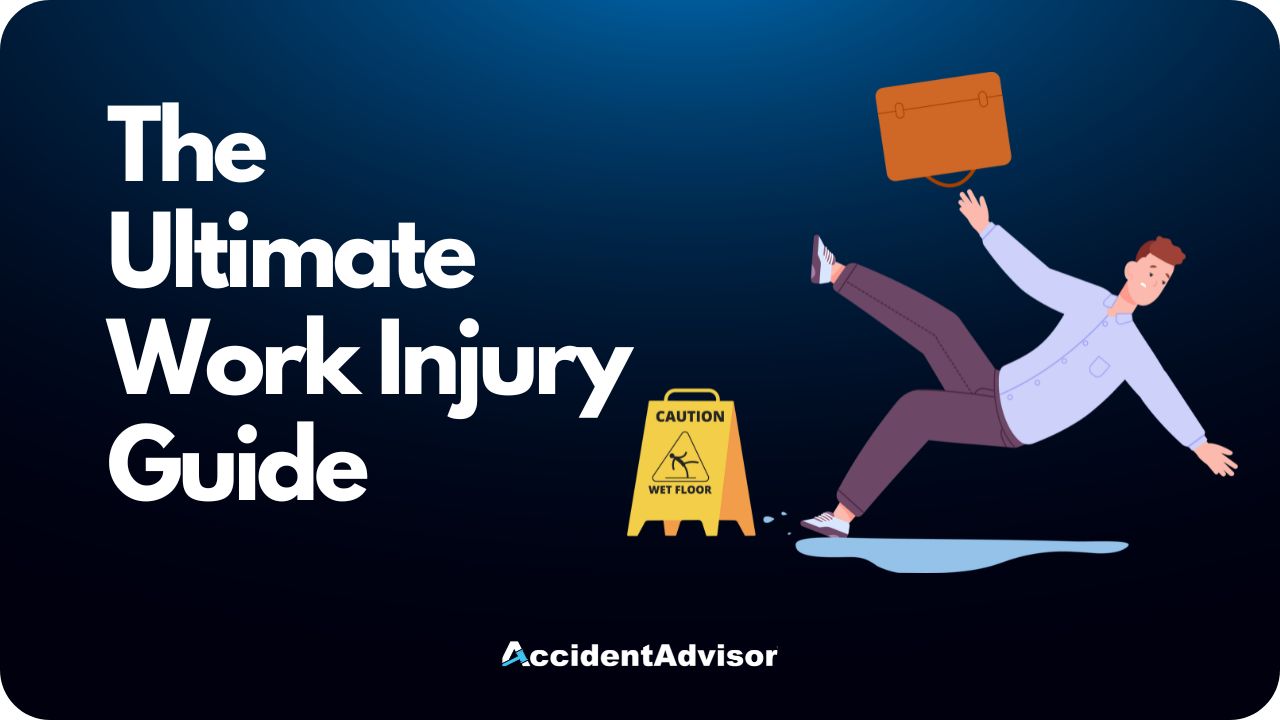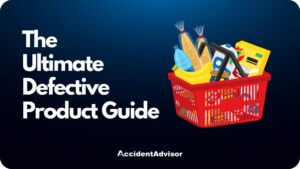Workplaces are meant to be safe environments, but accidents and injuries happen every day. From slips and falls to machinery malfunctions, toxic exposure, and repetitive stress injuries, millions of workers suffer harm each year on the job. These injuries can affect not only your physical health but also your financial security, career, and peace of mind.
If you’ve been injured at work, you may suddenly face medical bills, time away from your job, and uncertainty about your rights. Thankfully, systems like workers’ compensation and legal protections exist to support injured workers and ensure they receive the medical care and financial recovery they need.
This guide is designed to help you understand the steps to take immediately after a workplace injury, how workers’ compensation works, when and how to file a claim or lawsuit, and what to expect from settlements. It also provides insight into common workplace injuries, prevention strategies, and resources available to help you recover physically, emotionally, and financially.
By the end of this guide, you’ll know how to:
- Respond right away if injured at work
- Seek and document proper medical treatment
- File a workers’ compensation claim and understand your benefits
- Recognize when a lawsuit may be necessary
- Learn about average settlement amounts for different types of injuries
- Prevent future workplace accidents
- Access resources for legal, financial, and emotional support
Whether you’ve just experienced a workplace accident or want to be prepared, this guide will serve as a comprehensive resource to protect your health, rights, and future.
Table of Contents
- 1. What to Do if Injured at Work 🩹
- 2. Obtaining Medical Attention 🏥
- 3. Reporting a Work Injury 📋
- 4. How Workers’ Compensation Works 💼
- 5. How to File a Workers’ Comp Claim 📝
- 6. Filing a Work Injury Lawsuit ⚖️
- 7. Work Injury Settlements 💵
- 8. Common Workplace Injuries & Causes ⚠️
- 9. Preventing Workplace Injuries 🛑
- 10. Resources & Support 🤝
- Conclusion
1. What to Do if Injured at Work 🩹
A workplace injury can be overwhelming, but the steps you take immediately afterward are critical for your health and your claim for compensation. Acting quickly ensures you receive proper care and protects your legal rights.
1.1 Ensure Immediate Safety
If possible, move away from danger right away. For example, shut off equipment, leave an area with chemical exposure, or step away from falling hazards. Once you are safe, alert a supervisor or coworker so they can help and document the incident.
1.2 Seek Medical Attention
Your health comes first. For serious injuries such as heavy bleeding, broken bones, head trauma, or chemical exposure, call 911 immediately. For less severe injuries, follow your workplace’s medical protocol. Many employers have on-site first aid or designated healthcare providers. Even if your injury seems minor, get it checked out by a medical professional to avoid long-term complications.
1.3 Report the Injury
Notify your employer or supervisor as soon as possible. Many states have strict deadlines—sometimes as short as a few days—for reporting workplace injuries to qualify for workers’ compensation. Written notification is best, as it creates a record of your report.
1.4 Document the Incident
Document everything about the accident:
- Take photos of the accident scene, equipment, or hazard
- Write down details about how the injury happened
- Collect names of witnesses who saw the accident
- Save any accident reports filed with your employer
Quick Recap: First Steps After a Work Injury
- Move to safety and get medical help right away
- Report the injury to your employer as soon as possible
- Document the accident thoroughly with photos, notes, and witnesses
Learn about what to do after a work injury.
2. Obtaining Medical Attention 🏥
Prompt and thorough medical care is essential after any workplace injury. It ensures your health is protected, creates a record of your condition, and supports your workers’ compensation or legal claim.
2.1 Emergency vs. Non-Emergency Care
- Emergency injuries (e.g., broken bones, severe bleeding, head trauma, chemical burns) require immediate care at the nearest emergency room. Do not delay treatment for the sake of reporting the injury first.
- Non-emergency injuries (e.g., strains, sprains, repetitive stress injuries) should still be evaluated quickly. Your employer may direct you to an approved medical provider for the initial visit.
2.2 Employer-Approved Providers
Many states require injured workers to see a doctor chosen or approved by their employer or workers’ compensation insurance company, at least initially. Be sure to follow this requirement so your treatment is covered. However, you may later have the right to request a second opinion or switch to your own doctor.
2.3 Follow-Up Care
After your first appointment, ongoing care is often needed, especially for injuries like back problems, joint damage, or repetitive strain. Always:
- Attend every scheduled appointment
- Follow your doctor’s treatment plan carefully
- Keep copies of medical records, prescriptions, and bills
2.4 Importance of Documentation
Medical documentation is crucial in work injury cases. Detailed notes from healthcare providers confirm the severity of your injuries, the recommended treatment, and the connection between your injury and workplace conditions. This evidence supports your workers’ compensation or lawsuit claim.
Quick Recap: Medical Care After a Work Injury
- Seek immediate emergency care if necessary
- Follow employer rules about approved doctors
- Keep up with follow-up care and treatment plans
- Save all medical records as proof of your injury
3. Reporting a Work Injury 📋
Reporting your injury to your employer is one of the most important steps after a workplace accident. Failing to report promptly can jeopardize your right to workers’ compensation benefits.
3.1 When to Report
You should notify your employer as soon as possible after the injury occurs. Most states have strict deadlines—sometimes as short as a few days, and usually no longer than 30 days. Delays can raise suspicion, make it harder to prove your case, and even result in denial of benefits.
3.2 How to Report
- Verbal report: Inform your supervisor or manager immediately.
- Written report: Always follow up in writing. Many companies have official accident report forms you must complete.
- Keep a copy: Retain a copy of your report for your records. If your employer does not provide one, write your own detailed statement and keep a signed copy.
3.3 What to Include in Your Report
Your report should clearly outline:
- Date, time, and location of the injury
- Detailed description of how it happened
- The body parts affected
- Any witnesses present
- Whether medical attention was required
3.4 Employer’s Responsibility
Once you report your injury, your employer is usually required to:
- Document the incident internally
- Notify their workers’ compensation insurance provider
- Provide you with forms and instructions for filing a workers’ compensation claim
Quick Recap: Reporting a Work Injury
- Report your injury immediately, both verbally and in writing
- Include detailed facts about the incident and injuries
- Keep a copy of your report for your records
- Your employer must notify their insurer and help you begin the claim process
4. How Workers’ Compensation Works 💼
Workers’ compensation is a no-fault insurance system designed to provide medical care and financial support to employees injured on the job. Understanding how it works is essential for navigating your claim and protecting your rights.
4.1 What Workers’ Compensation Covers
Workers’ compensation generally covers:
- Medical expenses: Doctor visits, hospital stays, medications, surgeries, and rehabilitation
- Partial wage replacement: Payments to compensate for lost income while you are unable to work
- Vocational rehabilitation: Training or assistance if you cannot return to your previous job
- Death benefits: Payments to surviving family members in the event of a fatal workplace accident
Coverage varies by state, so it’s important to familiarize yourself with your state’s specific laws.
4.2 No-Fault System
Workers’ compensation is a no-fault system, meaning you do not have to prove your employer was negligent to receive benefits. This allows you to receive medical and wage replacement benefits quickly.
Limitations: Because workers’ compensation provides benefits regardless of fault, it usually bars employees from suing their employer for additional damages. Lawsuits are typically only possible against third parties (e.g., equipment manufacturers or contractors) or in cases of employer misconduct.
4.3 Employer Responsibilities
Employers are legally required to:
- Maintain workers’ compensation insurance coverage
- Provide claim forms and instructions for injured employees
- Cooperate with medical evaluations and insurance investigations
Failing to meet these responsibilities can lead to penalties for the employer and may give you additional legal options.
Quick Recap: How Workers’ Compensation Works
- Covers medical expenses, lost wages, rehabilitation, and death benefits
- No-fault system means benefits are available without proving employer negligence
- Employers must maintain coverage, provide claims paperwork, and cooperate with the process
Learn more about the workers’ comp claim process.
5. How to File a Workers’ Comp Claim 📝
Filing a workers’ compensation claim correctly and promptly is essential to ensure you receive the benefits you are entitled to. The process involves notifying your employer, completing paperwork, and following up with the insurance provider.
5.1 Reporting the Injury to Your Employer
Notify your supervisor or human resources department as soon as possible. Many states require reporting within a few days of the injury. Be clear, concise, and factual in your report. Include:
- Date, time, and location of the incident
- How the injury occurred
- Which body parts were affected
- Witnesses present
5.2 Completing Claim Forms
Your employer or their workers’ compensation insurance company will provide the necessary forms. When filling them out:
- Be thorough and accurate
- Attach medical records or reports related to the injury
- Keep copies of all documents submitted
5.3 The Claims Process
Once your claim is filed:
- The insurance company reviews the claim
- You may be required to undergo medical evaluations by a company-approved physician
- The insurer decides whether to approve or deny the claim
- Benefits, such as medical expenses and wage replacement, are provided if the claim is approved
5.4 Appeals if Denied
If your claim is denied, you can appeal:
- Request a review by the insurance company
- File an appeal with your state’s workers’ compensation board
- Consider consulting a workers’ compensation attorney to guide you through the process
Quick Recap: Filing a Workers’ Comp Claim
- Report the injury promptly to your employer
- Complete all claim forms accurately and keep copies
- Follow the insurer’s instructions and attend medical evaluations
- Appeal denials through the proper channels
6. Filing a Work Injury Lawsuit ⚖️
While workers’ compensation covers most workplace injuries, there are situations where filing a lawsuit may be necessary. Understanding when and how to pursue legal action is crucial for securing additional compensation.
6.1 When a Lawsuit is Possible
- Third-party liability: If a defective machine, contractor, or property owner caused your injury, you may be able to sue that third party for damages.
- Employer misconduct: In rare cases, if the employer did not carry workers’ compensation insurance or acted with gross negligence, you may have grounds for a lawsuit outside the workers’ comp system.
- Severe or catastrophic injuries: Additional compensation for pain, suffering, or long-term disability may be pursued through legal action against responsible parties.
6.2 Legal Theories
Depending on the circumstances, lawsuits may involve:
- Negligence: Proving the responsible party failed to exercise reasonable care
- Product liability: If a defective machine or tool caused the injury
- Wrongful death: In fatal workplace accidents, surviving family members may file claims
6.3 Steps in Filing a Lawsuit
- Consult an attorney: A work injury lawyer can evaluate your case and identify potential defendants.
- Statute of limitations: Each state has deadlines for filing lawsuits, often separate from workers’ comp claims.
- Filing a complaint: Your attorney submits a formal complaint to the court detailing your case.
- Discovery: Both sides exchange evidence, including medical records, accident reports, and witness testimony.
- Settlement negotiations or trial: Many cases settle before reaching court, but complex cases may proceed to trial for a judge or jury decision.
Quick Recap: Work Injury Lawsuits
- Lawsuits are typically against third parties or in cases of employer misconduct
- Legal theories include negligence, product liability, or wrongful death
- Follow proper legal steps, including deadlines, filing, discovery, and settlement negotiations
Learn more about how to file a work-related accident lawsuit.
7. Work Injury Settlements 💵
Many work injury cases are resolved through settlements rather than going to trial. Understanding how settlements work helps you make informed decisions about your claim and ensures you receive fair compensation.
7.1 Average Settlement Amounts
Settlement amounts vary widely depending on injury severity, lost wages, and medical costs:
- Minor injuries (sprains, minor fractures): Typically a few thousand to tens of thousands of dollars
- Moderate injuries (broken bones, surgeries, temporary disability): Tens of thousands to hundreds of thousands
- Serious or catastrophic injuries (permanent disability, paralysis, brain injuries): Hundreds of thousands to millions
- Wrongful death: Often millions, depending on lost income, support, and emotional damages
7.2 Types of Compensation
- Economic damages: Medical bills, lost wages, rehabilitation, vocational retraining
- Non-economic damages: Pain and suffering, emotional distress, loss of quality of life (if allowed outside workers’ comp)
- Structured settlements vs. lump sum: Large settlements may be paid over time to cover long-term care and expenses
7.3 Settlement Timeline
- Simple claims may settle in a few months
- Complex cases involving severe injuries, multiple defendants, or disputed liability may take years
- Timely medical documentation, witness statements, and legal representation can speed up the process and improve outcomes
Quick Recap: Work Injury Settlements
- Settlement amounts depend on injury severity, medical costs, lost wages, and long-term impacts
- Compensation can include economic and non-economic damages
- Timelines vary; documentation and legal guidance are key to maximizing recovery
Learn more about workers’ comp settlements.
8. Common Workplace Injuries & Causes ⚠️
Understanding the types of workplace injuries and their common causes can help employees stay vigilant and employers improve safety. These injuries range from minor incidents to life-altering accidents.
8.1 Physical Injuries
- Slips, trips, and falls: Wet floors, uneven surfaces, or cluttered walkways
- Machinery accidents: Injuries from unguarded equipment or improper training
- Vehicle-related accidents: Forklifts, trucks, or company vehicles
- Strains and sprains: Overexertion, lifting heavy objects improperly
8.2 Repetitive Stress & Occupational Illness
- Repetitive motion injuries: Carpal tunnel, tendonitis, and back strain
- Hearing loss: Prolonged exposure to loud environments
- Respiratory conditions: Dust, chemicals, or fumes leading to chronic illness
8.3 Toxic Exposure & Long-Term Conditions
- Asbestos: Lung disease or mesothelioma
- Chemicals and solvents: Skin burns, neurological damage, organ toxicity
- Radiation or environmental hazards: Long-term health consequences
- Infectious agents: Workplace exposure in healthcare or laboratory settings
Quick Recap: Workplace Injury Types and Causes
- Physical injuries include falls, machinery accidents, and overexertion
- Repetitive stress and occupational illnesses often develop over time
- Toxic exposures can lead to serious long-term health conditions
- Awareness and proper safety protocols reduce risk
9. Preventing Workplace Injuries 🛑
Preventing workplace injuries is a shared responsibility between employers and employees. Proactive safety measures reduce the risk of accidents, protect workers’ health, and minimize financial and legal consequences.
9.1 Employer Responsibilities
- Follow OSHA regulations: Ensure compliance with workplace safety standards
- Provide training: Proper instruction on equipment use, safety protocols, and emergency procedures
- Maintain equipment: Regular inspections and maintenance of machinery, tools, and vehicles
- Safety gear: Supply personal protective equipment (PPE) such as helmets, gloves, masks, and eye protection
9.2 Employee Best Practices
- Follow safety procedures: Adhere strictly to workplace rules and instructions
- Report hazards immediately: Notify supervisors about unsafe conditions or equipment
- Use proper lifting and handling techniques: Prevent back and joint injuries
- Stay alert: Avoid distractions and be mindful of surroundings
9.3 Workplace Safety Programs
- Safety committees: Employee-led groups that monitor and improve safety practices
- Regular inspections: Identify and mitigate risks proactively
- Injury-prevention initiatives: Programs like ergonomic assessments, safety drills, and hazard awareness campaigns
Quick Recap: Preventing Work Injuries
- Employers must maintain equipment, provide training, and enforce safety standards
- Employees should follow rules, report hazards, and use proper techniques
- Safety programs and inspections reduce the likelihood of accidents
10. Resources & Support 🤝
Recovering from a workplace injury often requires more than medical care. Legal guidance, financial assistance, and emotional support can make the process smoother and help you protect your rights.
10.1 Government Agencies
- Occupational Safety and Health Administration (OSHA): Enforces workplace safety regulations and investigates unsafe conditions
- State Workers’ Compensation Boards: Administer claims and provide guidance on benefits
- Department of Labor: Offers resources for workplace safety, wage protection, and employee rights
10.2 Legal Help
- Workers’ compensation attorneys: Specialize in claims and can guide you through the process
- Personal injury lawyers: Represent you in lawsuits against third parties or negligent parties
- Bar association referral services: Connect you with qualified attorneys in your area
- Pro bono or low-cost legal aid: Available for workers who cannot afford private counsel
10.3 Financial & Emotional Support
- Disability benefits and job retraining programs: Assist workers unable to return to their previous job
- Counseling services: Help cope with trauma, stress, or anxiety related to the injury
- Support groups: Provide guidance, emotional reassurance, and shared experiences from other injured workers
Quick Recap: Leveraging Resources
- Use government agencies for safety enforcement and workers’ comp guidance
- Seek qualified legal representation for claims or lawsuits
- Access financial and emotional support programs to aid recovery
Conclusion
Workplace injuries can be sudden and life-changing, affecting your health, income, and overall quality of life. Knowing what steps to take immediately after an injury, how to file workers’ compensation claims, and when to pursue legal action is crucial for protecting yourself and your rights.
This guide has covered:
- Immediate actions to ensure safety and seek medical care
- Reporting injuries promptly to employers and documenting incidents
- Understanding how workers’ compensation works and filing claims
- When and how to file a lawsuit against third parties or negligent employers
- Average settlement amounts and types of compensation
- Common workplace injuries, their causes, and prevention strategies
- Resources for legal, financial, and emotional support
Being informed and proactive allows you to recover safely, maximize benefits, and reduce the risk of future injuries. Remember, workplace protections exist to help you—take advantage of them, document everything carefully, and seek professional guidance when necessary. With the right steps, you can navigate your recovery and protect your future after a work-related injury.

Rocky Horton
Author













